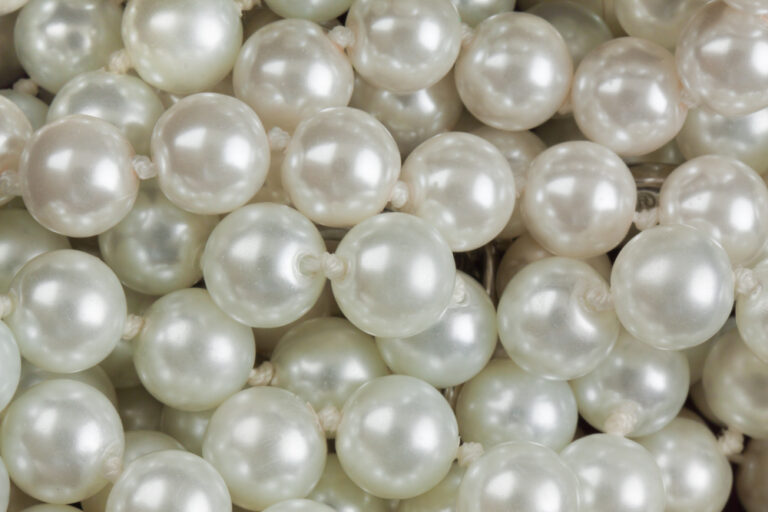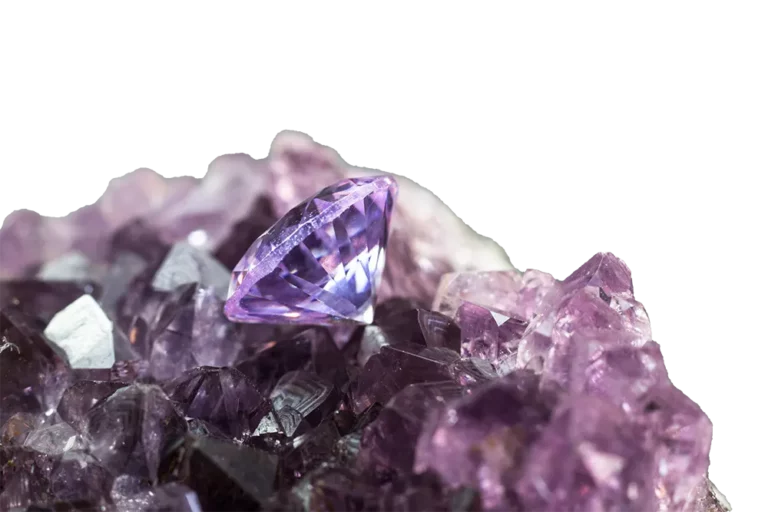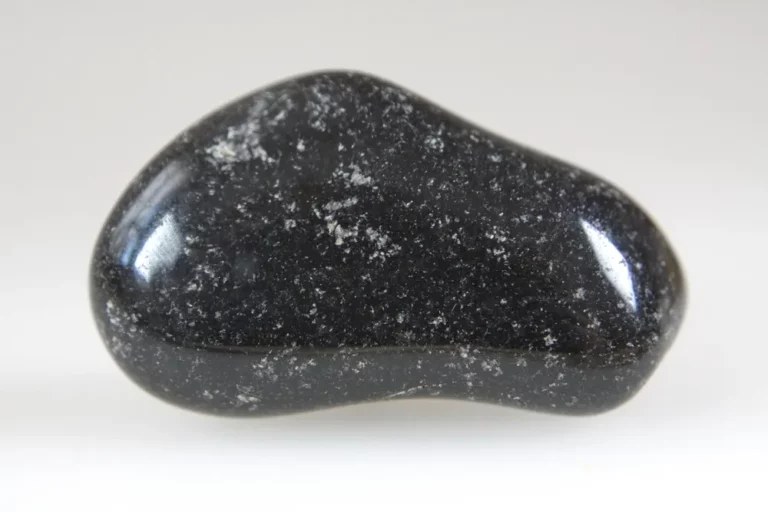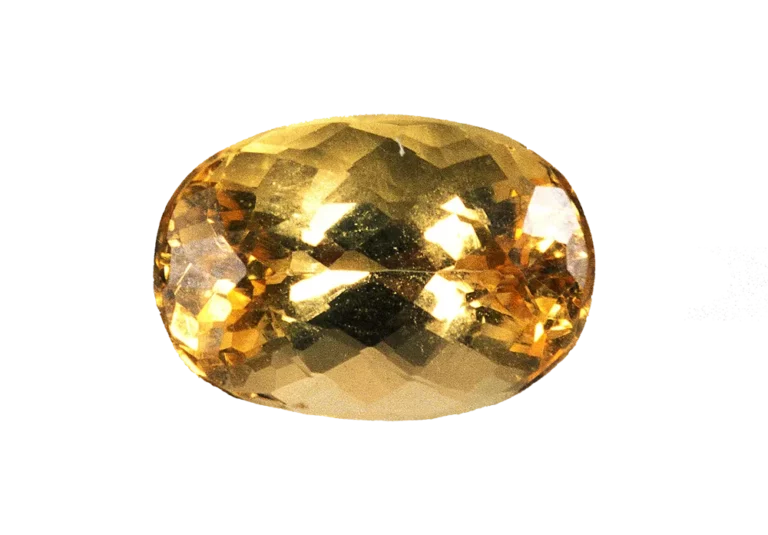Labradorite Stone: Properties, Benefits & Meanings
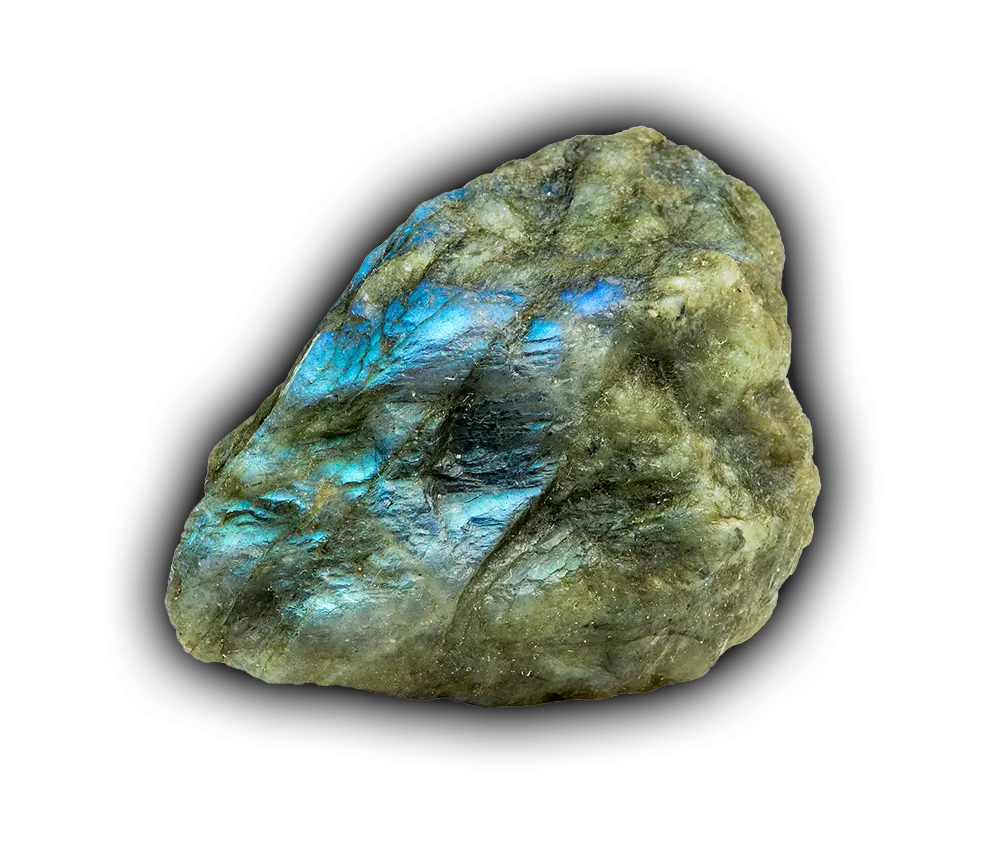
Labradorite Stone Overview
The Labradorite stone is a rare green/blue variety of the feldspar family. It is prized for its special properties and holds a special place in collectors’ hearts.
This gemstone has a sheen covering it that shimmers in different shades of blue and green, giving it an ethereal appearance. This article will take a look at the properties, meanings, and uses of the Labradorite stone.
What is The Labradorite Stone?
The beautiful Labradorite gemstone is most well known for its beautiful luster. The surface of the stone changes color constantly due to a special effect. This property adds great value to the stone, making it highly desirable and visually striking.
This gemstone is related to the throat and heart chakra. Enthusiasts associate it with the symbols of luck and spirituality.
The Labradorite stone is a calcium-enriched feldspar mineral first identified in Labrador, Canada, and known for its iridescence or “schiller.” Its chemical formula is ((Ca, Na)(Al, Si)4O8).
As with all plagioclase members, the crystal system in Labradorite is triclinic. Three directions of cleavage are present: two nearly at right angles and more apparent (good to perfect quality), while a third direction—poorly developed—is less so.
It forms as clear, white to gray blocky or lath-shaped grains in common mafic igneous rocks such as basalt and gabbro; it is also found in anorthosites.
Origin of the name
Labradorite gets its name from the occurrence at Ford Harbour, Paul Island, Labrador, Canada (Nain anorthosite).
What are some other names used for The Labradorite stone?
Some other names for Labradorite are:
- Black Moonstone
- Carnatite
- Labrador Feldspar
- Labrador Moonstone
- Mauilite
- Opaline Feldspar
- Radauite
- Silicite
- Calcic plagioclase
Labradorite stone Geological Occurrence
Labradorite, a silicate mineral found in mafic igneous rocks like basalt and gabbro, is the feldspar variety most common to those formations.
The uncommon anorthosite bodies consist almost entirely of Labradorite. However, it is often found in metamorphic amphibolites and can also form a part of certain sedimentary deposits.
Common minerals associated with the Labradorite stone in igneous rocks include olivine, pyroxenes, and magnetite.
Labradorescence
Labradorite displays an iridescent optical effect known as Labradorescence, which was coined by Ove Balthasar Bøggild, who defined it as follows:
Labradorescence is the peculiar reflection of the light from submicroscopic planes orientated in one direction (rarely in two); these planes have never such a position that simple indices can express them, and they are not directly visible under the microscope.
This effect is caused by light interference from the alternating microscopic exsolution lamellae of high- and low-calcium plagioclase phases.
Where is The Labradorite stone found?
The Labradorite stone is found in many countries worldwide, including:

What are the physical properties of The Labradorite stone?
The Labradorite stone has the following physical properties:
| Mineral Group | Feldspar |
| Formula | (Ca, Na)[Al(Al, Si)Si2O8] |
| Color | Pale Green, Blue, Colorless |
| Hardness (Mohs scale) | 6 – 6.5 |
| Refractive Index | 1.56 – 1.568 |
| Cleavage | Perfect |
| Luster | Sub-Vitreous |
| Specific Gravity | 2.69 – 2.72 |
What is the typical appearance of The Labradorite stone?
Some specimens of the Labradorite stone exhibit a schiller effect that produces a strong play of iridescent blue, green, red, and orange colors.
The Labradorite stone’s spectacular displays of color are called “labradorescence,” and specimens with the highest quality labradorescence are often selected for use as gemstones.
Labradorite is often found as tabular, oval, round, and even heart-shaped stones, ranging from purple to grey-blue, green, colorless, and grey-white.
- Lynx Eye: Labradorite with an iridescent green sheen.
- Oregon Sunstone: A variety of Labradorite with inclusions of copper instead of hematite.
- Spectrolite: The name “spectrolite” is sometimes used to describe Labradorite, which displays a high degree of labradorescence.
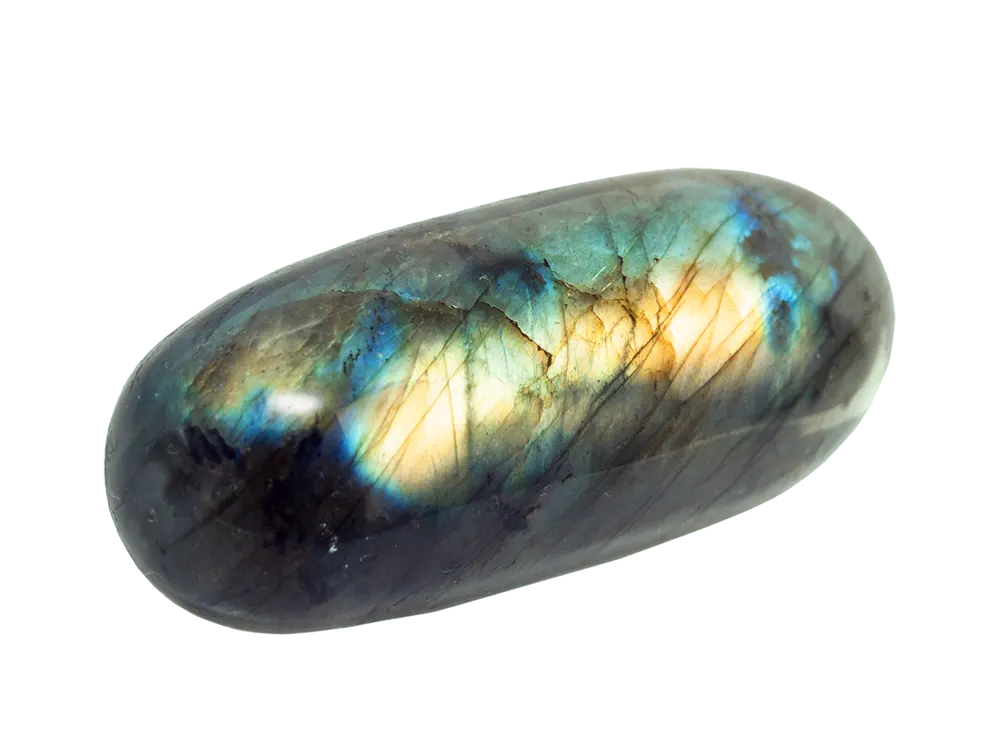
How can you tell if your Labradorite is genuine or not?
The best way to determine whether your Labradorite is genuine is to get it examined by a professional. You can visit your local jeweler or take the stone to an expert for evaluation.
Some valuable tips to remember when checking if your stone is genuine or not are as follows.
- Color: Genuine gemstones are not one solid color throughout; they have varying hues across their body. A dull, uniform-looking Labradorite is probably not genuine. This type of coloration is an indication of dying.
- Acetone Test: Soak Labradorite stone in acetone for a few minutes to see if the color comes off. If it does, you can be sure your stone is fake.
- Labradorescence: It shows labradorescence – a Shiller effect in lustrous metallic tints, often blue and green, and sometimes the complete spectrum. If there is no such effect, then the stone is probably fake.
- Check for weight: Check the weight of your Labradorite. If it feels too light, then it may be fake or insubstantial.
- Scratch Test: Do a scratch test. Kitchen knives shouldn’t leave a mark on hard stones with a rating of 6-7 or higher. The Labradorite stone has a Mohs hardness of 6.5 and does not have cleavage.
The Labradorite stone Price and Value
The unique schiller effect is just too challenging to recreate in a synthetic gemstone. You could expect to pay roughly $50 a carat for a low-quality Labradorite stone.
Color
Color is the most crucial factor for determining the price of a Labradorite stone. The most desirable colors are blue or green, but other hues can also be found. The more intense and pure the color, the more valuable it will be. Medium-quality Labradorite with a pale blue color will sell for approximately $50 per carat.
Cut
The cut is the way a gemstone has been shaped and polished. The quality of the cut affects the brilliance, luster, and fire of a stone. A well-cut Labradorite stone should have clean facets that reflect light through the stone like mirrors.
Size
The size of a gemstone is the most critical factor in determining its value. Larger gems are rarer, more valuable, and more desirable than smaller ones. For example, a one-carat Labradorite is usually more costly than a half-carat one because fewer are available at any given time, and they take longer to find.
Subtype
Labradorite has several subtypes, including Lynx Eye, Oregon Sunstone, and Spectrolite. These all have different color tones and are valued differently. For example, Spectrolite can cost more than a common Labradorite because it takes more time to find, and there is a higher demand for the more beautiful Spectrolite.
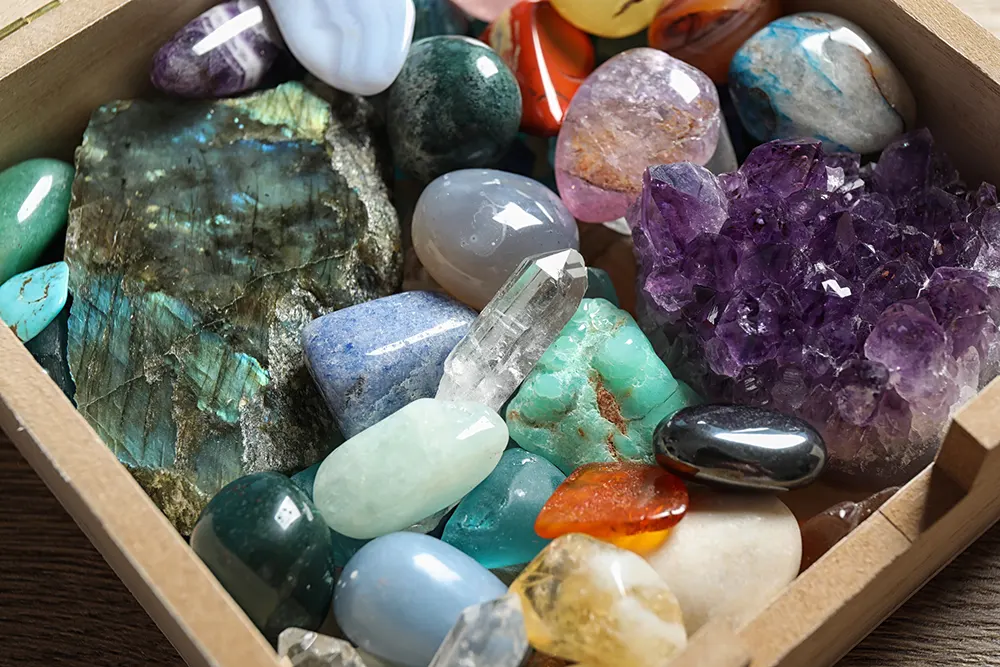
Chakra Connection
Which Chakra does The Labradorite stone symbolize?
- The Labradorite stone is a gem that helps with the Throat Chakra. It allows us to speak our truth, and it also helps us to connect with our intuition. This can be extremely useful when trying to make crucial decisions in life.
- The Labradorite stone is associated with the heart chakra. It promotes self-love, compassion, and acceptance. Labradorite can help you to connect to your inner child, allowing you to understand what makes them happy and content in life. The Labradorite stone has been used for centuries by healers to open up clogged energy centers that prevent one from experiencing joy.
Where are these Chakras located?
- The heart chakra is found between your shoulder blades in the center of your chest. It’s associated with love and compassion.
- The throat chakra is at the center of the neck, between your thyroid gland and larynx. It regulates how energy is processed in your body through temperature change, growth (or lack thereof), and metabolism.
What does The Labradorite stone Symbolize?
The Labradorite stone symbolizes the following:
- The power of the imagination: Labradorite is a stone of creativity and imagination. It can provide you with powerful visions of what could be, helping you create the life you desire. It stimulates your psychic abilities, allowing you to tap into your subconscious mind to access information beyond the physical realm. Labradorite helps connect with your higher self and promotes spiritual growth when used during meditation.
- Self-empowerment: Labradorite is a stone of empowerment. It helps you to recognize your inner strength and to tap into it when faced with challenges in life. It can also help you to make peace with difficult situations, knowing that everything happens for a reason and that there is always something positive to be gained from each experience.
- Honesty and authenticity: Labradorite encourages you to be honest with yourself and others. It helps you to see things clearly, without bias or judgment. This is especially important when dealing with people who are challenging to get along with and can help you recognize their strengths and weaknesses for both parties to coexist peacefully.
- Magical properties: Labradorite is a powerful stone that brings magic into your life. It can help you connect with spiritual realms and communicate with otherworldly beings when you are in tune with its energy. It also allows you to bring about changes in your everyday life using the power of your mind rather than physical force or coercion.
- Peace and tranquility: Labradorite helps to bring peace and serenity into your life. It can help you feel calmer when things are chaotic around you and can help relieve stress. This stone also promotes self-acceptance, which is essential if you’re trying to overcome an addiction or stop bad habits like smoking or overeating.
What are the uses of The Labradorite stone?
- Labradorite is a stone highly prized for its metaphysical properties, especially for its high energies that promote psychic development and spiritual awareness. Labradorite is an excellent crystal to use during meditation sessions and is the ideal stone to charge during rituals with other rocks.
- The Labradorite stone is known to transform negative energy into positive. It helps to bring out the best in others and myself. A powerful crystal for personal protection, Labradorite guards against psychic attack and disempowerment. It shields the aura by transforming negativity and helps to keep you grounded.
- The Labradorite stone can also lessen hot tempers, increase personal willpower, and bring success into your life.
- Labradorite is the stone of magic, luck, and contacting the spirit world. Labradorite necklace has vital energy because its vibration stimulates the higher chakras and encourages spiritual awareness, opening one up to psychic powers and intuition. It connects you to higher consciousness.
- Labradorite is a stone of protection. It will protect you from all dangers, especially spiritual ones. It helps you to access your spiritual guides. It develops psychic abilities and personal power by connecting with universal energies and forces on a higher level.
- The Labradorite stone allows us to take control of our lives and initiates change and transformation when necessary.
- Labradorite is a stone of transformation. Labradorite earrings help to promote inspiration and courage, improving our ability to change by encouraging risk-taking and eliminating self-doubt.
- The Labradorite stone also transforms negative energy into positive energy, gently moving us forward with our purpose in life. It’s a gateway to limitless potential.
- Labradorite is an excellent stone for meditation and has many healing properties. Labradorite Bracelet helps the owner bring a more detached perspective to their life, blocking destructive emotions and desires. Labradorite allows one to remain calm and at peace even amid overwhelming circumstances. It promotes personal tolerance, compassion, and forgiveness, which can come from understanding self-worth, identity, and purpose. It also helps in digestion.
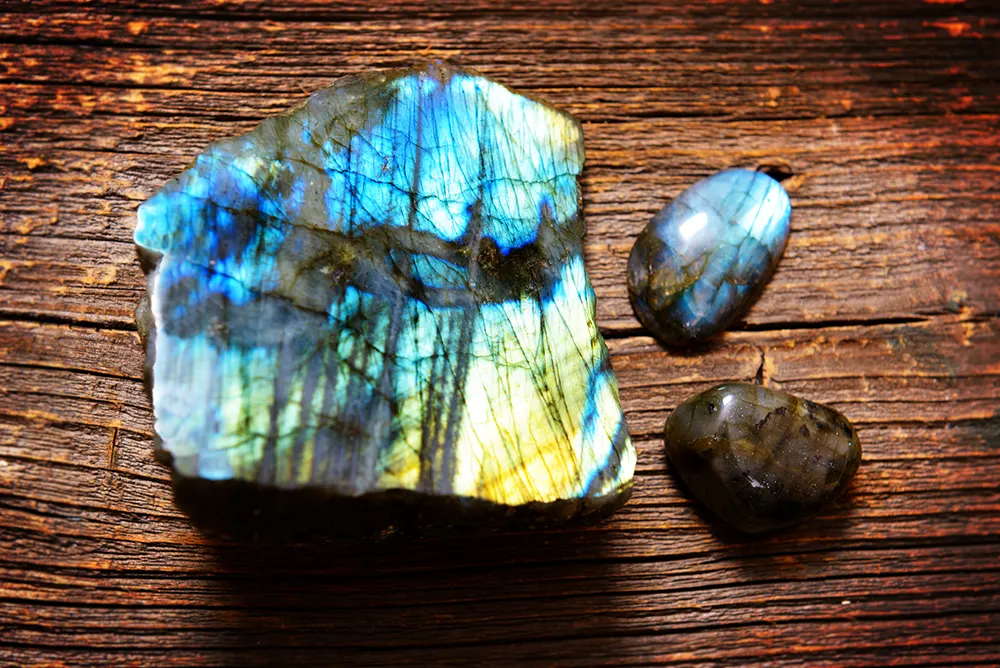
How to clean Labradorite Jewelry?
Labradorite is durable and can be cleaned with warm soapy water and a soft cloth. Avoid using ultrasonics or steamers, as these may cause damage to the stone’s surface. If you want to clean your Labradorite jewelry at home, take the following steps:
- Clean the jewelry with a microfiber cloth and warm water, as you would any other piece of jewelry.
- If your Labradorite Jewelry is dirty or has begun to lose its luster, you can clean it by soaking the piece (do not submerge) in mild dishwashing liquid and warm water.
- Rub some alcohol onto a soft cloth and use this to clean the surface of the gemstone—this will keep it looking shiny!
- Burning sage will remove any negative energy absorbed into the stone.
- There are various ways to recharge your amulet, including immersing it in moonlight or burying it underground.
It’s essential to cleanse the Labradorite stone before you use it—this will keep your energy flowing and help prevent negative energies from entering.
Labradorite should not be exposed to household chemicals or heat, damaging it or changing its color.
FAQ
What is Labradorite known for?
Labradorite is known for its ability to change colors when light hits it, so the name “stone of transformation” is no surprise. Labradorite enhances the strength of will and inner worth by stimulating the throat chakra—which controls communication.
When should we wear Labradorite?
The gemstone Labradorite in the ring is believed to be worn on the right hand (the right-handed will wear it on their right fingers while lefties on their left). The stone should be worn during Shukla Paksha, which falls between Thursday and Friday evenings.
What other gemstones go well with Labradorite?
The best gemstones that go well with Labradorite are Aquamarine, Green Tourmaline, and Kunzite. It is also a good idea to pair it with any other blue stone like sapphire or spinel so that the two can enhance each other’s power.
It also goes well with Grape Agate.
Where should I place a Labradorite in my room?
If you practice feng shui, it’s essential to have Labradorite in your home. This gemstone is associated with water energy—and for this reason, it must be placed on the southwest side of any space where feng shui is being used.


